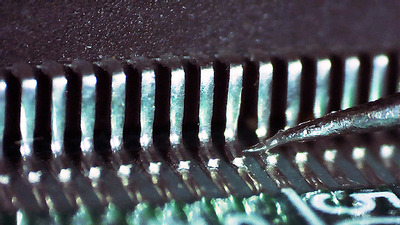First post, by adalbert
Yesterday I found out that my Trident TVGA8900D started giving a garbled image. It turned out, that a lot of legs on the video chipset have gotten loose. It was clearly visible under a microscope, the pins were moving, there are also black gaps:
I fixed the issue by re-soldering the chip with addition of a bit of fresh solder and a lot of flux. It works fine now. I documented the process in a video: https://www.youtube.com/watch?v=syAhMC4H5aY
How common is such issue? I remember that some people had similar issue with 3Dfx cards and fixed them by reflowing. I wonder if this is caused by manufacturing defects, or just by the age of solder. I noticed this problem only on the main graphics chipset, with fine-pitch QFP package. The other chip with bigger pins was fine.
I wonder if we should expect this issue to happen more often, like bad capacitor plague or leaked battery issue.
Repair/electronic stuff videos: https://www.youtube.com/c/adalbertfix
ISA Wi-fi + USB in T3200SXC: https://www.youtube.com/watch?v=WX30t3lYezs
GUI programming for Windows 3.11 (the easy way): https://www.youtube.com/watch?v=d6L272OApVg
